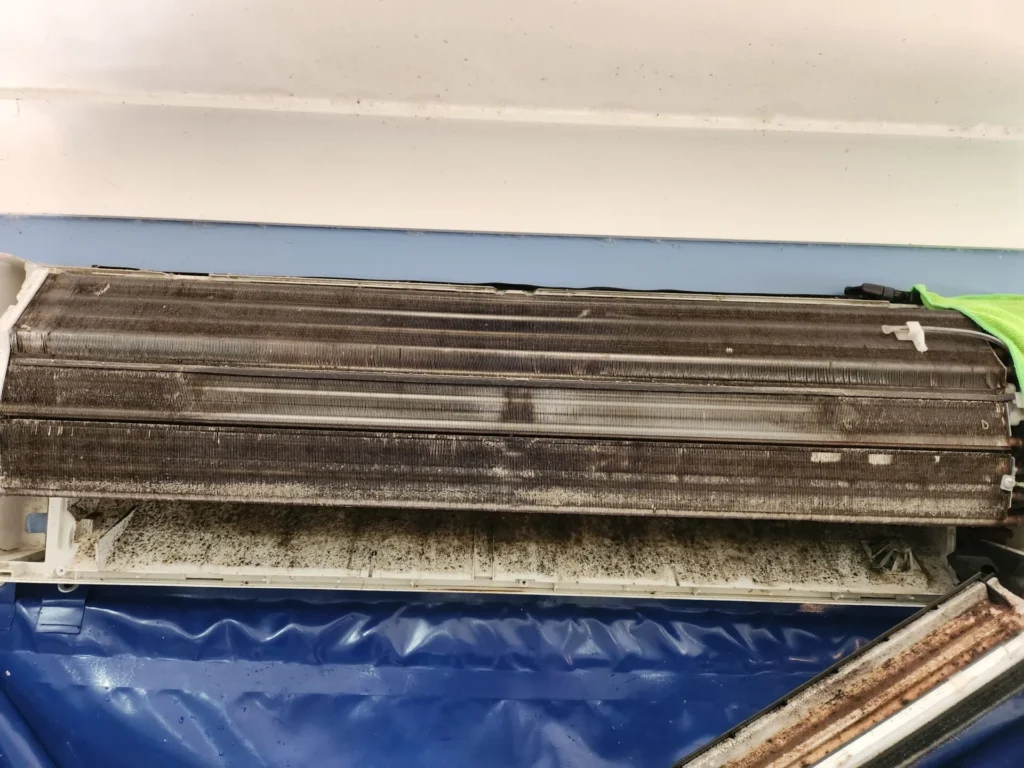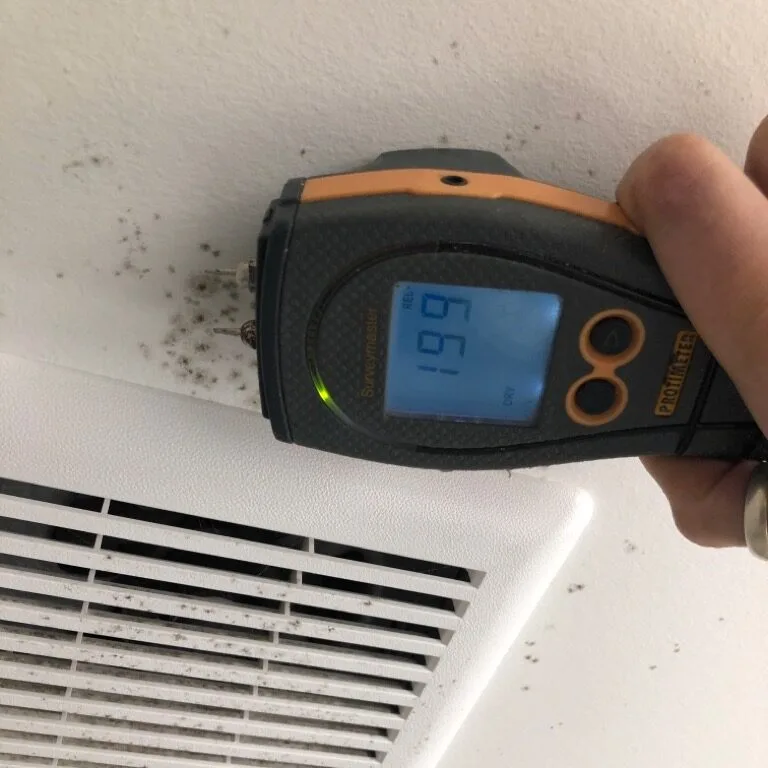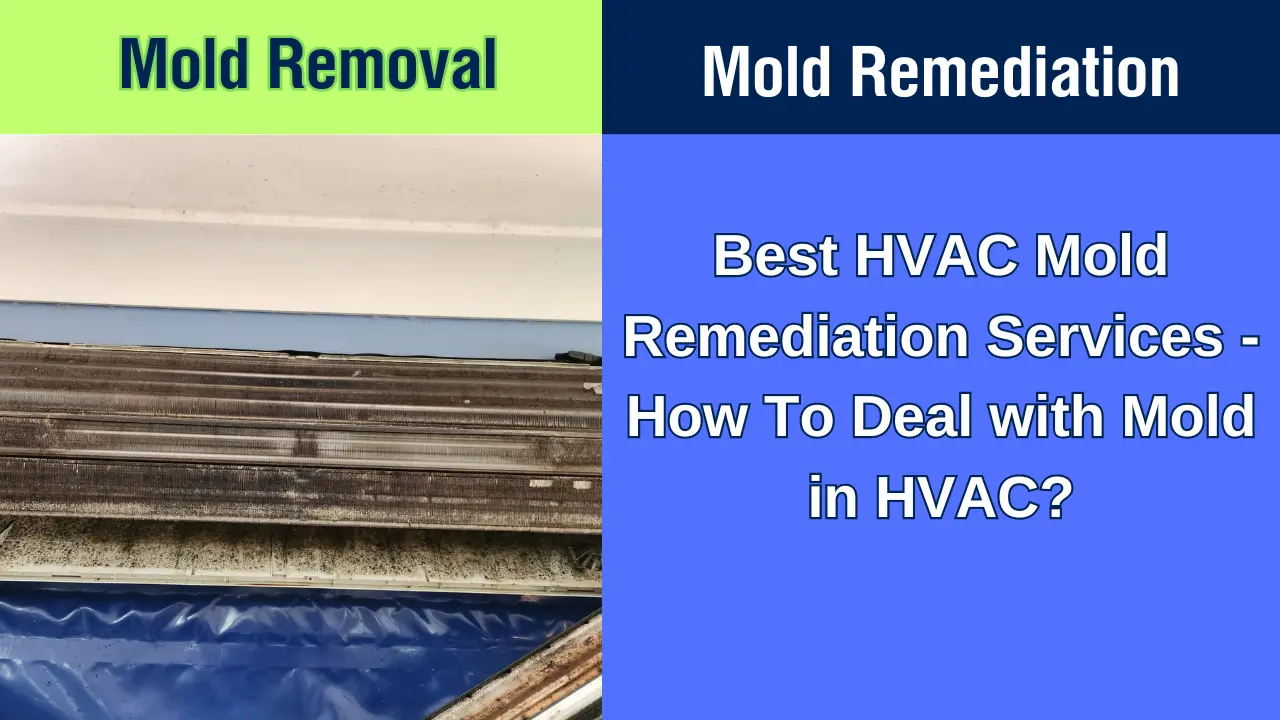HVAC Mold Remediation- Mold in a heating, ventilation, and air conditioning (HVAC) system is no small problem. If a homeowner notices certain signs, they can follow this guide to determine whether they need a simple mold inspection or whole-house remediation.
Mold in heating, ventilation, and air conditioning (HVAC) systems is a serious problem that can affect both the efficiency of the system and the health of occupants.

Mold spores can spread through air ducts, leading to respiratory problems, allergies, and other health issues.
Here is a detailed guide on how to address and prevent mold in HVAC systems.
I noticed a musty smell when the air conditioner turned on. Do I have mold in my HVAC?
A musty or moldy smell or allergy symptoms that occur when your air conditioner is running could be a good indication of mold in your HVAC unit.
How Can I Do HVAC Mold Remediation?
To get rid of mold, you’ll first need to have the unit or units inspected to see the extent of the problem and determine the treatment plan.
This way, a professional can locate the mold and recommend a variety of options, from the best air duct cleaning services to the best mold removal companies.
If you want to take the DIY route first, you can check out the steps below to help you identify the signs of mold and how to safely get rid of it.
Read More: No Contract Pest Control Near Me | 24 Hour Pest Control Services
Steps to Identify Mold in Your HVAC System
Early detection is crucial for effective remediation. Here’s how to identify mold in HVAC systems:
👉Musty odor: Mold often emits a distinctive musty odor. If this odor is present when the HVAC system is running, mold may be present.
👉Visible mold growth: You may notice mold on vents, registers, or inside ductwork.
👉Increased allergy symptoms: If building occupants are experiencing an increase in allergy or asthma symptoms, this could indicate the presence of mold spores in the air.
What are the Common Areas That Mold Might Grow in HVAC Systems?
There are three areas of an HVAC system where mold can grow: the air ducts, the evaporator coil, and the drain pan.
A common place for mold to grow in HVAC systems is the air ducts, especially if the ducts are poorly sealed or insulated. This makes the ducts more prone to condensation, which can provide the ideal environment for mold growth.
The evaporator coils in an HVAC system are responsible for cooling the air, so condensation on the coils that is not properly drained or dried can lead to mold growth on wet surfaces.
Another place conducive to mold growth is the drain pan, which collects and drains condensation from the HVAC system. If the drain pan is not cleaned regularly or if there are drainage issues, standing water can build up and lead to mold growth.
What are the Common Causes of Mold in an HVAC?
Some of the most common causes of mold in an HVAC system are leaky ducts, an oversized air conditioning unit, excessive humidity in the home, and poor ventilation.
Mold thrives in areas with high humidity, so any type of leak or excess moisture can lead to mold in an HVAC system. Leaky or damaged ducts, for example, can allow moisture to enter the HVAC system and lead to mold in the ducts if the moisture is not properly drained or dried.
Poor ventilation is another common cause of mold, as it can lead to stagnant air and moisture buildup. Without proper airflow, moisture can linger, allowing mold spores to settle and grow.
Signs of Mold in an HVAC Unit
There are several signs of mold in an HVAC unit, including a musty odor, visible mold in vents, and unexplained respiratory symptoms in residents.
Once a homeowner knows what mold smells like, they will be able to tell if the odor coming from their HVAC system is mold or something else. A persistent musty or moldy smell in the home or an unpleasant odor coming from the vents or when the system is running could be a sign of mold in the air ducts, on the evaporator or condenser coils, or on the air filters.
If a homeowner does not notice a musty odor or wants more evidence of mold growth in their HVAC units, they can check the vents, ducts, coils, and drip pans for signs of mold spores.
Any dark spots, discoloration, or fuzzy patches indicate visual mold and confirm that the homeowner should consult a mold remediation or HVAC specialist to service their units and remove any signs of mold.
Knowing what black mold looks like can help homeowners successfully identify it and fix it before it gets worse.
Read More: Best Residential Mold Testing and Inspection Near Me
Effective HVAC Mold Remediation Process
Removing a small mold infestation in an air conditioning unit can be a do-it-yourself project, but professionals have the right tools and experience to tackle the problem quickly and safely.
Here are some of the best ways to remove mold from your HVAC unit:
1. Turn off the HVAC system
The first step is to turn off the HVAC system to prevent mold spores from spreading further.
2. Assess the extent of mold contamination
Professional HVAC technicians should perform a thorough inspection to determine the extent of mold contamination. Using advanced tools such as moisture meters, infrared cameras, and mold testing kits will provide accurate data on the presence of mold.
3. Isolate contaminated areas
To prevent cross-contamination, seal off areas of the HVAC system that are contaminated with mold. This may include closing certain vents or applying plastic sheeting over registers and ducts.
4. Mold Removal Methods
Removing mold from heating, ventilation, and air conditioning (HVAC) systems typically involves the following steps:
✅Cleaning HVAC components – Ducts, coils, fans, and condensation drain pans should be thoroughly cleaned with antimicrobial cleaners specifically designed for HVAC systems.
✅HEPA Vacuuming – Use HEPA (high-efficiency particulate air) vacuums to remove loose mold spores. HEPA filters trap spores and prevent them from spreading.
✅Use of Biocides – In some cases, applying EPA-approved biocides can eliminate active mold growth. However, this should be used with caution and only after proper cleaning.
5. Remedial and Preventive Measures
✅Improve Ventilation – Install proper ventilation systems to reduce moisture and humidity buildup. This includes making sure ducts are properly insulated to prevent condensation.
✅Replace air filters regularly – Change filters frequently to reduce dust and prevent the buildup of organic material that causes mold.
✅Repair drainage problems – Make sure condensation drain pans are not clogged and drain properly. Replace or repair damaged pans or pipes.

Bottom Line
You can help prevent mold from forming in your HVAC system by regularly changing the filter, running the system consistently, and performing annual HVAC inspections.
To prevent further health risks and ensure your HVAC system remains mold-free, homeowners can use a few mold prevention methods.
Cleaning, inspecting, and replacing the furnace filter regularly will prevent moisture or debris from building up and causing more damaging or costly problems.

